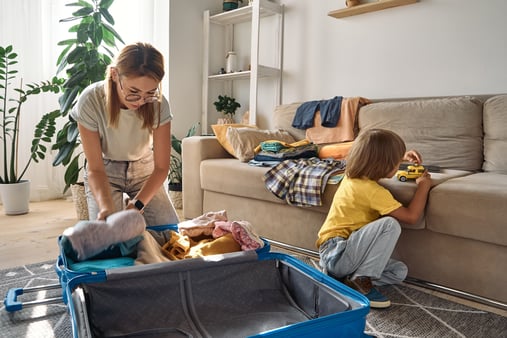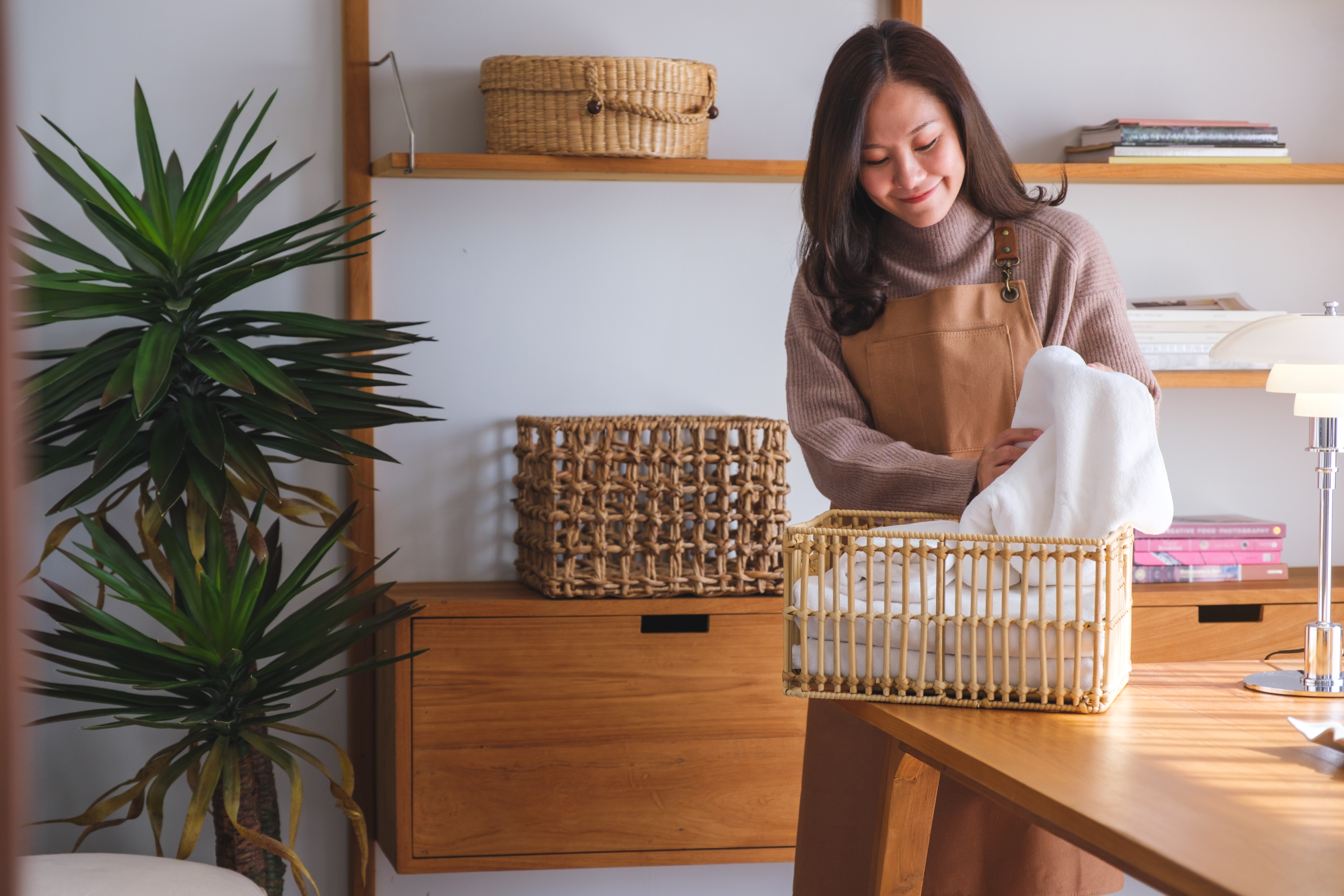Organizing and Purging to Keep Your Home Clean
Organizing and Purging to Keep Your Home Clean
Decluttering is a source of stress for most people, but a perpetually cluttered household can be just as stressful. Keeping your space organized and free of unnecessary items is essential. Clutter not only gathers dust and debris, making your home dirtier, but it also complicates cleaning tasks like dusting and vacuuming, adding unnecessary challenges to maintaining a clean environment.
Thankfully, you can simplify decluttering and maintain the momentum to ensure lasting results from your organizing efforts. Here are some top decluttering tips and tidying techniques, along with strategies to stay motivated and make the most of clutter-free living.
First: Get Rid of the Excess
With organization, the cliche "less is more" rings true. More items bring more opportunities to accumulate clutter — each extra object means that there is something else to dust, label, and carefully store. Purging can be difficult, however, as many people hold strong emotional attachments to seemingly ordinary objects.
This may be a task that calls for a few hours dedicated to full-on decluttering with all hands on deck, in which family members or roommates work together to determine what they need or what can be removed to limit clutter and its associated stress.
This process will look a bit different in each household, but often begins with separating items into three main categories:
- Things to keep
- Things to donate
- Things to recycle or throw away
Ideally, many items fall into the second category, allowing other people to bring new life to them. To qualify for the 'keep' category, items must be genuinely necessary and, ideally, used regularly. A few sentimental objects are allowed, but these should not occupy more than one or two boxes or shelves.
Organizing What Remains
 Once unnecessary items have been removed, the thought of organizing should be a lot less intimidating. More sorting will be needed, however. Take all the items from the 'keep' category and determine which are required daily, which are needed less often, and which can be sent to storage.
Once unnecessary items have been removed, the thought of organizing should be a lot less intimidating. More sorting will be needed, however. Take all the items from the 'keep' category and determine which are required daily, which are needed less often, and which can be sent to storage.
At this point, it may be tempting to invest in all the organizing products and systems available but remember: these can also serve as clutter if they are not used strategically. Evaluate each cleaning product and organizational system to determine how it fits into various household spaces or tasks. When possible, opt for versatile, multi-purpose solutions that can be adapted to meet evolving needs and preferences.
It is important to designate official spots where the most important items can be placed. These locations should feel intuitive, although labeling can remove doubt about which objects are stored where. Aim to keep similar objects together or create "stations" for specific types of activities or tasks: scrapbooking supplies can be kept in a craft nook, for example, or a reading corner with a bookshelf makes for excellent book storage.
Naturally understanding where each item is situated or applying labeling allows anything to be located and used in a matter of seconds. If, while organizing these items, it becomes evident that some are no longer necessary, it is perfectly okay to add these non-essentials to the previously mentioned donate pile.
Once proper locations have been determined for everyday items, take pictures of these spaces. Forming a visual guide will make it easier to return everything to its proper position if spaces return to their previous state of clutter.
Commit to Keeping Organized
 Getting organized is only the beginning. A common New Year's resolution for people is to organize their homes, but they’re often disappointed when these spaces fall back into disarray. This is avoidable with the right organization system (and an accountability strategy to help stay on track).
Getting organized is only the beginning. A common New Year's resolution for people is to organize their homes, but they’re often disappointed when these spaces fall back into disarray. This is avoidable with the right organization system (and an accountability strategy to help stay on track).
For many, this process begins with developing a cleaning schedule or routine. Organizing and decluttering should be built into this, much like typical household tasks such as vacuuming or washing the dishes. Schedule ten or fifteen minutes every day for basic tidying: finding objects that are out of place and returning them to their designated space. This feels less overwhelming if tackled one room at a time.
It is important to get all household members in on the process. This could involve a group effort but it is also helpful to designate zones that specific family members or roommates are expected to keep organized. Respectful communication is a must, and at times, it may be necessary to revisit tidying strategies to ensure that these still serve all household members well.
Embrace the Ease of Organized Living
With the right tools and equipment, household organization becomes less of a chore and more of an efficient, manageable task. High-level cleaning supplies and equipment can help. Powerful vacuums such as the Kirby Avalir 2, for example, expedite a variety of cleaning processes. A strategic approach will limit dirt and debris while creating a home environment that feels harmonious and joyful.
